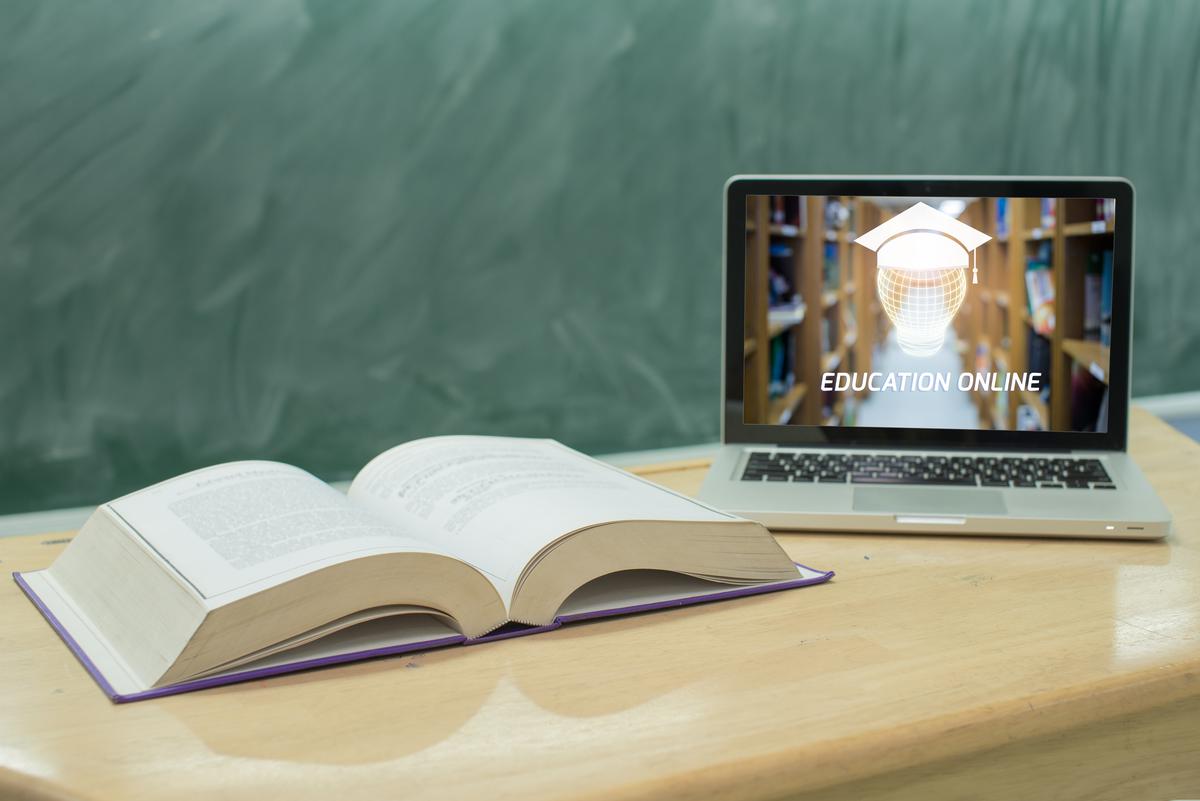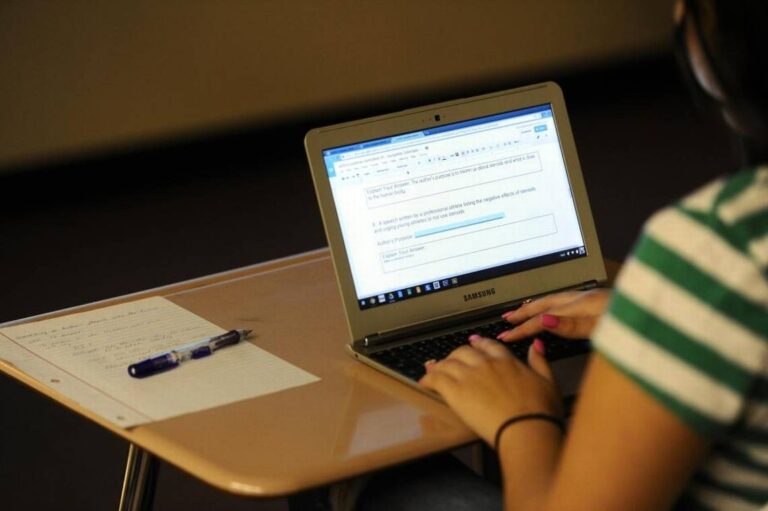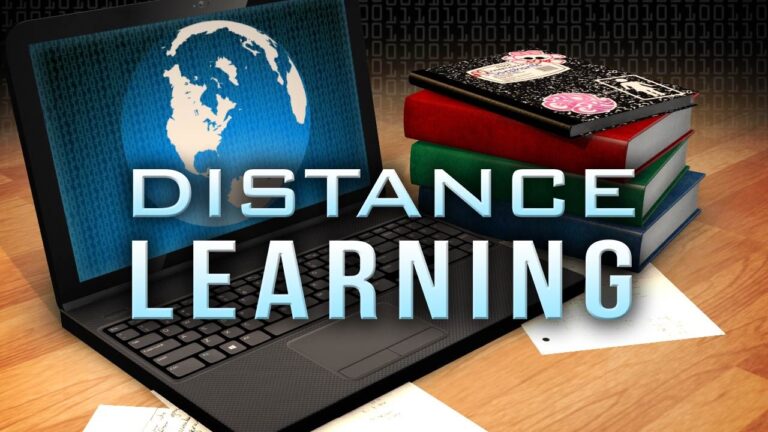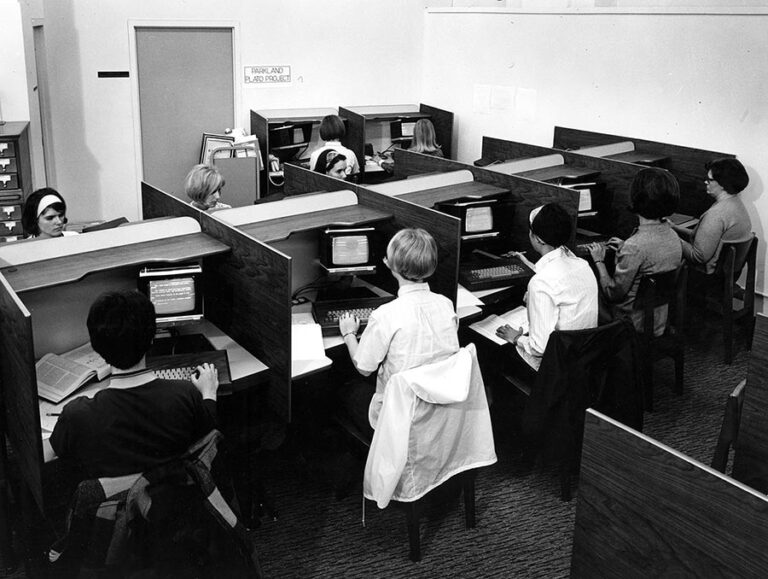The Impact Of Online Learning On Traditional Brick And Mortar School
The Impact Of Online Learning On Traditional Brick And Mortar School. In recent years, online education has changed the face of higher learning. Traditional brick-and-mortar colleges are now up against a new set of obstacles as they try to maintain their position as leaders in a rapidly evolving educational environment as more and more universities offer courses through online platforms.
This article will examine how conventional colleges and universities throughout the world are being impacted by the growth of digital learning.
More Accessible Education
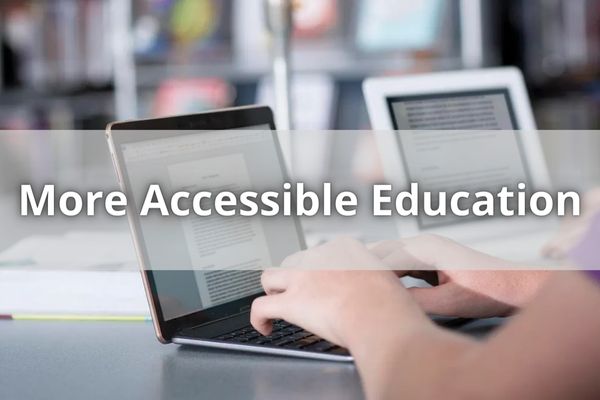
I’m a huge fan of online learning. I think it has opened up so many educational opportunities that were previously inaccessible due to distance, schedules or other circumstances. With the advent of virtual and blended learning options, school is no longer restricted to brick-and-mortar buildings – it can take place anywhere you have an internet connection!
Students may access classes through distance learning from practically any location in the world, which may have prevented them from ever being able to attend in person. As they may learn at their own speed without having to worry about exams or due dates, virtual learning environments provide students more control over their education. Blended learning combines traditional classroom instruction with online coursework for a comprehensive experience that’s ideal for working professionals who need flexibility when studying.
These new forms of schooling make higher education available to anyone with the motivation and dedication necessary to complete their studies. Online classes also provide a platform for professors and experts to share their knowledge on a global scale, bridging cultural divides and creating connections between people all over the world.
The positive impact of this democratization of information is hard to measure but undeniably profound. Given these advantages, it’s clear why digital educational offerings are becoming increasingly popular – now let’s explore how cost savings can be realized as well.
Cost Savings For Students
With the rising cost of tuition, more and more students are turning to online education for affordable alternatives. 1970s distance learning innovations offer an accessible option for those who cannot afford or do not have access to traditional brick-and-mortar institutions.
Online classes and courses provide a viable educational alternative that can be used by anyone with an internet connection. Online education makes it possible for people from all walks of life to gain knowledge in their chosen field without having to worry about travel expenses, textbooks, or dormitory fees.
This form of distance education eliminates many of the associated costs traditionally seen at mortar schools, thus allowing learners to save money while still getting the same quality education they would receive if they attended in person. Moreover, many colleges and universities also offer transferable credits when taking online courses so students can complete their degrees faster and cheaper than ever before.
The availability of online education has enabled students to pursue higher levels of learning without breaking the bank. With its tremendous potential savings and convenience benefits, it is no wonder why this type of instruction continues to grow in popularity today.
Increased Flexibility And Convenience
I can hear the groans of students everywhere at the thought of having to attend school from home. The idea of learning online is becoming a reality for many K12 schools across the country due to the pandemic, and traditional brick-and-mortar institutions are feeling the effects.
Zoom meetings, online instruction, and synchronous learning have become commonplace as we navigate our way through this new educational landscape.
The increased flexibility and convenience that comes with learning online has been welcomed by some students—especially those who require more personalized attention or additional time on assignments. Many find it easier to complete their work without distractions found in a classroom setting.
Plus, distance learners no longer have to worry about getting up early or commuting long distances; they simply log into their computer and begin lessons right away!
This shift towards virtual education brings with it an increase in student engagement which will be discussed further in the next section…
Increased Student Engagement
Student involvement increases as online education expands. According to research, virtual classroom pupils are really more engaged than their counterparts in conventional brick-and-mortar courses. This increased engagement is attributed to several factors:
- Online learning activities can often be tailored to each needs and interests of students.
- Students are able to learn at their own pace and access resources from anywhere with an internet connection.
- They also get the opportunity to interact with multimedia content and engage with other learners around the world instead of being limited by physical classroom walls.
Students now find it simpler to stay focused and motivated when studying online because to this degree of personalisation.
Students’ concentration and involvement levels have increased as a consequence, which eventually results in higher learning outcomes.
Improved Learning Outcomes
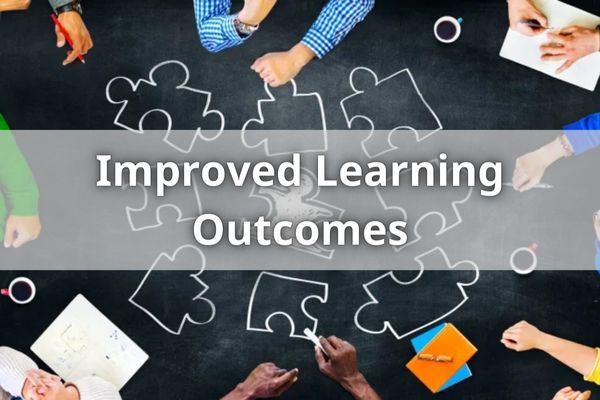
I’ve seen firsthand how online education can improve learning outcomes. Before the pandemic, I was already enrolled in an online school and found it to be a great way to learn at my own pace without having to worry about attending lectures or being tied down by certain schedules.
With the advent of COVID-19 pandemic, traditional brick-and-mortar schools had no choice but to switch over to virtual classrooms as well. It has become clear that students are benefitting from this new hybrid style of learning. Not only do they get access to more resources than ever before, but they also have control over their learning environment. They don’t need to worry about fitting into the same physical space with dozens of other people; instead, they can create a personalized study area that works for them and helps drive productivity.
The shift away from in-person classes during the pandemic has created an opportunity for both student and teacher alike. Students now have greater access to educational materials while educators benefit from digital tools that enable them to make better use of class time and ensure every learner is getting what they need out of each lesson.
Moving forward, these advancements will undoubtedly help produce even higher levels of achievement among today’s learners. In light of these changes, recruiting opportunities have opened up considerably – especially when it comes to attracting top talent who might not otherwise consider studying at a brick-and-mortar school.
Increased Recruiting Opportunities
As more educational institutions offer online program options, they are not only allowing students to access course material from anywhere but also recruiting a much larger pool of applicants.
In-person and online classes can be taken by middle and high school students alike, giving the opportunity for students to learn regardless of their location or financial standing. This has opened up many new possibilities for those who may have previously been unable to attend traditional brick-and-mortar institutions due to opportunity cost, distance, or other limiting factors.
The increased reach of these programs allows universities and colleges to recruit prospective students from all corners of the globe. With virtual tools such as video conferencing and email communication becoming commonplace in higher education curricula, potential applicants no longer have to worry about whether they’ll fit into an institution based on geographical or socioeconomic boundaries; instead, they can apply with confidence knowing that the playing field is level between them and any other applicant.
This trend towards expanded recruitment opportunities via online courses means that schools can attract talented individuals from various backgrounds who might otherwise be excluded — people whose unique perspectives could bring invaluable insight into academia.
As a result, both teachers and learners benefit from having greater diversity among their peers while engaging in meaningful dialogue around a range of topics within higher education classrooms.
Looking ahead, this will undoubtedly create an even richer learning experience across college campuses worldwide.
Going forward it’s important for educational institutions to ensure they have enhanced technology infrastructure in place so that online courses run smoothly without disruption or technical delays.
Enhanced Technology Infrastructure
As our society has adapted to the realities of living with a global pandemic, online education has quickly become an invaluable resource for many brick-and-mortar institutions.
The US Department of Education made this transition easier by providing additional funding and resources to help facilitate virtual learning initiatives. With these technologies in place, conventional colleges may now alter their emphasis from providing just in-person education to including more online choices in their curricula.
They have been able to maintain their competitiveness in a time when conventional means might not be as efficient or available.
Brick-and-mortar schools must overcome a number of issues brought on by the growth of online education if they are to flourish. In order to give students a dependable and secure platform on which they can access course materials and communicate with their classmates and professors, it is crucial that they invest in technological infrastructure updates.
Without proper investment, they risk losing out on potential students who are seeking quality digital educational experiences.
These investments pay off through increased student satisfaction as well as improved retention rates due to enhanced support services available both virtually and in person. Consequently, brick-and-mortar universities are able to maintain an edge over purely online programs while still offering the latest technologies needed for success during the modern age.
Moving forward, increased competition for students will continue to shape the landscape of higher education around the world.
Increased Competition For Students
I recall that when I first began college, it looked like the majority of the enrolled students were from my hometown. More and more students are enrolling in online courses and programs that are being provided by schools and institutions all around the world nowadays. Traditional brick-and-mortar institutions are feeling the effects of this increasing competition quite strongly.
Giving all sorts of learners access to higher education has emerged as a key objective as educational policies continue to evolve. Colleges and universities have had to assess how they can best accommodate these changes while also staying competitive with other institutions that offer online options.
Not only must they prepare their faculty members to teach both in-person and remotely, but they must also provide support services virtually as well. These adjustments present challenges for many schools who may not be able to keep up with the growing demand for online learning opportunities due to financial constraints or limited resources.
As such, some have turned towards partnering with outside vendors or even outsourcing services altogether in order to meet student needs without compromising quality of instruction or service delivery. The increasing prevalence of online education certainly affects traditional brick-and-mortar institutions in terms of competing for students.
Moving forward, this will undoubtedly have implications on faculty and staff at those same establishments as well.
Impact On Faculty And Staff
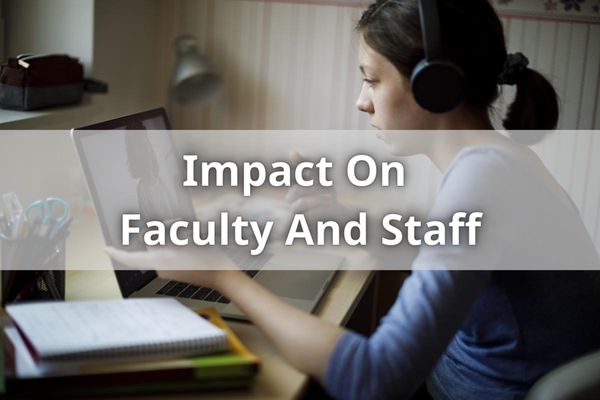
I have been a teacher in traditional brick-and-mortar institutions for many years and I can attest to the impact of online education on school staff, teachers and administrators. The shift away from a traditional classroom changes the academic rigor we are expected to maintain as educators. We need to adjust our best practices to ensure that students receive the same quality of education no matter what format they choose.
The introduction of technology into learning brings new challenges for faculty and staff alike. Not only do we need to learn how to use this effectiveness of online classrooms, but also make sure all students have access to it regardless of their economic situation or geographical location. This is often difficult with limited resources available at our schools. We must also be aware of potential security threats posed by digital platforms when communicating with students and sharing data.
Despite these additional hurdles, there are some positive aspects associated with online learning through bulletin board systems such as increased flexibility in terms of scheduling, reduced costs due to lack of travel expenses, and easier communication between instructors and students since everything is done virtually.
It’s important that we strive towards finding innovative strategies for teaching while still maintaining high standards for academic rigor. With hard work and dedication, teachers can successfully implement online educational programs without sacrificing student learning outcomes.
Moving forward into the next section about ‘impact on campus culture’…
Impact On Campus Culture
It goes without saying that the pandemic has drastically changed the learning experience for many students, forcing them to transition from traditional on-campus courses to fully online ones. Learning during the pandemic is a challenge in itself and it has significantly impacted campus culture as well.
The lack of physical interaction between peers and professors has caused an overall decrease in student engagement, making it more difficult to build meaningful relationships within educational circles. On top of this, social gatherings have all but disappeared due to restrictions put in place by universities.
The effects can be seen most notably when considering university clubs and organizations; they are no longer able to hold large events or even just meet up with one another like before. Without these activities, there is a sort of disconnect among those who take part in them leading to a weakened sense of community on campuses across the country. Additionally, some students may be feeling isolated since they cannot join their friends outside for lunch or coffee anymore.
Gone too are the days where long conversations held late into the night served as important bonding experiences for college-aged individuals. These moments were essential milestones in developing a strong network of contacts not only on your own campus but also beyond it.
This shift towards primarily virtual settings makes it harder than ever for students to make new connections which could potentially help launch their careers once graduation comes around. With that said, let us explore how these changes may affect education’s future direction.
Implications For The Future

In the constantly changing world of higher education, the effect of online education on conventional brick-and-mortar schools is a significant subject. There are many things to think about when it comes to the ramifications for the future, even though research has proven that many pupils are succeeding with this new educational model.
One area of particular concern is how online learning may affect classroom environments and social presence among peers and faculty. The quality of online credentials, too, must be evaluated since these qualifications will increasingly become accepted by employers at state-level and beyond.
These issues should not be taken lightly as they could potentially have dramatic effects on the way higher education functions in years to come. To ensure success going forward, all involved parties – from administrators to student groups – need to stay abreast of current trends while taking into account potential impacts:
Administrators:
- Evaluating curriculum offerings
- Addressing concerns about quality assurance
Student Groups:
- Ensuring access to technology resources
- Assessing the overall satisfaction levels
By actively monitoring changes in both technology and user preferences and responding accordingly, universities can make sure their programs remain competitive on a global scale well into the future.
Conclusion
In conclusion, the impact of online learning on traditional brick and mortar schools has been profound, particularly with the rise of for-profit online universities in the early 2000s. As traditional brick-and-mortar institutions grapple with how to best compete in this new environment, they must ensure their faculty and staff remain up to date with the latest technology, as well as providing students with an immersive online experience.
It is clear that these changes will have a lasting impact on campus culture, but by taking advantage of opportunities presented by online education, traditional brick-and-mortar institutions can continue to thrive for many years to come.

